Have you ever used any IoT smart home app like Google Home or Amazon Alexa to remotely control your home appliances? There is no need to physically move to switch on your lights or other electronic devices. With just a few clicks on the app, you get full controlling power to operate your home appliances.
This is the transformative impact of IoT technology. Today, the concept of smart home and smart living is emerging significantly. People nowadays seek feature-powered apps that help them automate and digitalize their home routine tasks. This emerging trend has broadened the scope for IoT smart home app development services.
Therefore, many startups and companies look to build IoT-based smart home apps to enhance their product usability or establish their business model. If you also aspire to take advantage of this growing trend and need help developing it, this guide gives you all the required information and insights about IoT smart home app development.
Read this blog till the end and you will know everything to successfully launch your first IoT smart home app.
Table of Contents
What is a Smart Home App?
A Smart Home App is an IoT-based software or mobile application. It is designed to control and manage various smart devices and IoT gadgets within a home through a centralized platform. These apps typically interact with Internet of Things (IoT) devices, home automation systems, and connected appliances.
The primary goal of a Smart Home App is to provide users with a convenient and streamlined way to monitor and control different aspects of their home environment. Smart home apps contribute to the concept of a smart home, where technology enhances convenience, energy efficiency, and overall home management.
Types of Smart Home Apps
The concept of a smart home is highly popular and trending in the real estate industry. This app gives controllability power to users to let them remotely control their electronic and digital appliances through apps. They cater to specific needs and preferences as per home utility.
As a result, every smart home app offers users a unique range of options to control and monitor their smart home IoT devices. The choice often depends on the types of devices a user owns and their ecosystem preferences, such as Alexa, Google, Apple, or other devices. Therefore, based on this, there are various types of smart home apps:
1. Centralized Smart Home Applications
Centralized Smart Home apps are IoT applications that serve as a centralized hub or interface to control and manage various smart home devices. Examples include:
- Amazon Alexa
- Google Home
- Apple HomeKit
2. Device-Specific Apps
These IoT apps allow users to control and manage a specific brand or type of smart home device. Users use these apps to interact with and control individual devices. Examples include:
- Nest
- Ring
- Philips Hue
3. Security and Surveillance Apps
They are specialized applications focused on managing and monitoring smart home security devices. These smart home apps provide features such as live video feeds, motion detection alerts, and remote monitoring.
- Arlo
- Wyze
4. Energy Management Apps
Energy Management Apps are designed to monitor and control the energy usage of smart home devices. Users can set schedules, monitor consumption, and optimize energy usage for increased efficiency.
- Ecobee
- Sense
5. IoT Home Automation Platforms
These platforms allow users to create custom automation rules and scenes. They serve as a central hub for managing interconnected smart home systems.
- SmartThings
- Hubitat Elevation
6. DIY and Open Source Platforms
DIY (Do It Yourself) and Open Source Platforms are software solutions that empower users to build and customize their smart home system. Examples include
- Home Assistant
- OpenHAB
Key Features of IoT Smart Home App
IoT Smart Home Apps typically offer a variety of features to enhance user convenience, control, and automation. These features collectively create a seamless and efficient smart home experience for users. The specific features may vary among different smart home platforms and apps. However, below are the key features of an IoT smart home app that are used widely across industries:
- Device Control
- Automation and Scenes
- Voice Control
- Real-Time Monitoring
- Customization
- Integration and Compatibility
- Security and Privacy Controls
- User Profiles and Permissions
- Energy Management
- Notification and Alerts
- Remote Access
- Firmware Updates
- User-Friendly Interface
- Logs and History
Benefits of Smart Home Automation Apps
Smart Home Automation Apps offer a range of benefits. From managing homes efficiently to enhancing security and automating repetitive tasks, smart home apps empower users in multiple. Here are the major benefits of smart home automation apps.
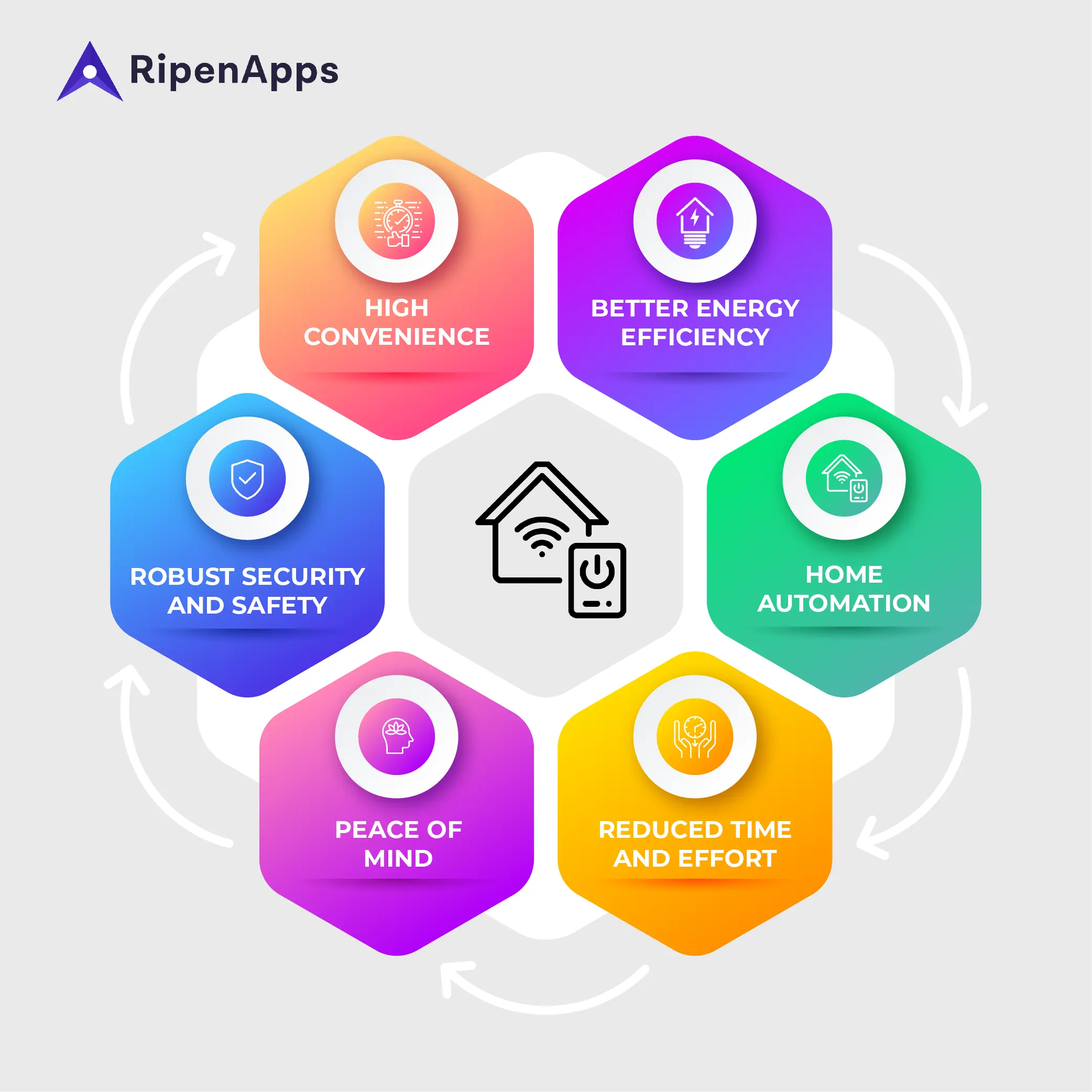
1. High Convenience
This is one of the top advantages of using smart home apps. It enables users to remotely control and monitor smart home devices from anywhere with an internet connection.
You can even integrate voice assistant or voice-activated smart devices with IoT-based apps and provide a hands-free controlling experience. As a result, smart home automation using IoT apps provides an ease of convenience and flexibility of home living.
2. Better Energy Efficiency
Many intelligent devices like smart thermostats, smart lighting, etc., are coming on the market. All these devices come with intelligent capability to make energy utilization more efficient.
These IoT home automation apps enable users to set schedules, adjust temperatures remotely, and optimize heating and cooling. Users can automate lighting schedules, turn off lights when not needed, and adjust brightness. Consequently, it helps them save more energy.
3. Robust Security and Safety
Security is a big and very serious concern in homes. As urbanization and the real estate industry are expanding, the need for solid home security is also becoming a top priority. In this case, smart home mobile apps can help people stay in a better secure, and safer place.
With IoT-based mobile apps, you can get access to security cameras and sensors, as well as instant alerts for unusual activities or security breaches. Moreover, you can remotely lock or unlock doors. Hence, these apps aid in enhancing home security and providing better control.
4. Home Automation
Home automation is the main element of smart home living. This feature focuses on empowering users by replacing routine tasks with automation capability. By using IoT home automation apps, you can create personalized automation routines based on your personal preferences and streamline repetitive tasks. You can even set up custom scenes that activate multiple devices simultaneously. For instance “Good Morning” scene adjusts lighting and thermostat settings.
5. Peace of Mind
The whole purpose of a smart home is to have a peaceful living experience. In traditional living, people mostly have to worry about various things related to their homes. But with the emergence of IoT technology and digital transformation, living standards have been also transformed. Today, with smart home automation apps, users can remotely monitor their homes while traveling outstation.
They can receive alerts, and view security camera feeds remotely about all the activities inside the home. To ensure home security, these apps can also send alerts for events like smoke detection or water leaks. This, eventually, gives you peace of mind when you are away from your home.
6. Reduced Time and Effort
It is one of the major advantages of IoT smart home. Since it allows you to automate smart home it helps in reducing time and effort. With home automation apps, you can automate routine tasks. It lets you save significant time and effort required for daily activities like adjusting thermostat settings, turning off lights, or managing home security.
Why Should Businesses Develop IoT Smart Home Apps?
IoT smart home app is one of the top IoT app development trends in the current market. This is because developing IoT Smart Home Apps offers various advantages for businesses, particularly those in the technology, electronics, and home automation industries. Here are the latest market statistics that indicate the growing dominance of IoT smart homes:
In global comparison, the USA reportedly generates the most revenue in the IoT smart home market, recording $38.8 Billion in 2024. (Source: Statista)
The global smart home market size is estimated to rise from $101.7 Billion in 2023 to $163.7 Billion by 2028 at a CAGR of 10.0% between 2023-2028. (Source: MarketsandMarkets)
So it is evident investing in IoT smart home app development can be a strategic move for businesses that aim to meet consumer demands and stay competitive in the evolving technology landscape. But how? Here are the top reasons to build smart home apps:
- Market Demand
- Competitive Advantage
- Ecosystem Integration
- Brand Loyalty and Customer Retention
- Data Insights and Analytics
- Monetization Opportunities
- Cross-Selling and Up-Selling
- Remote Support and Updates
- Differentiation in the Market
- Partnerships and Integrations
- Global Reach
Step-by-Step Process of IoT Smart Home App Development
Developing an IoT Smart Home App involves a step-by-step process. It includes planning, design, development, testing, and deployment. You will have to plan and define everything specifically. The development process can be more challenging when you use IoT for modern applications with AI or ML.
However, it is also important to note that there might be some specific steps and technologies that may vary depending on the project requirements such as budget, features, tech stacks, etc. We know it is a complex task. Therefore, to assist you, below we have explained the step-by-step process of IoT smart home app development.
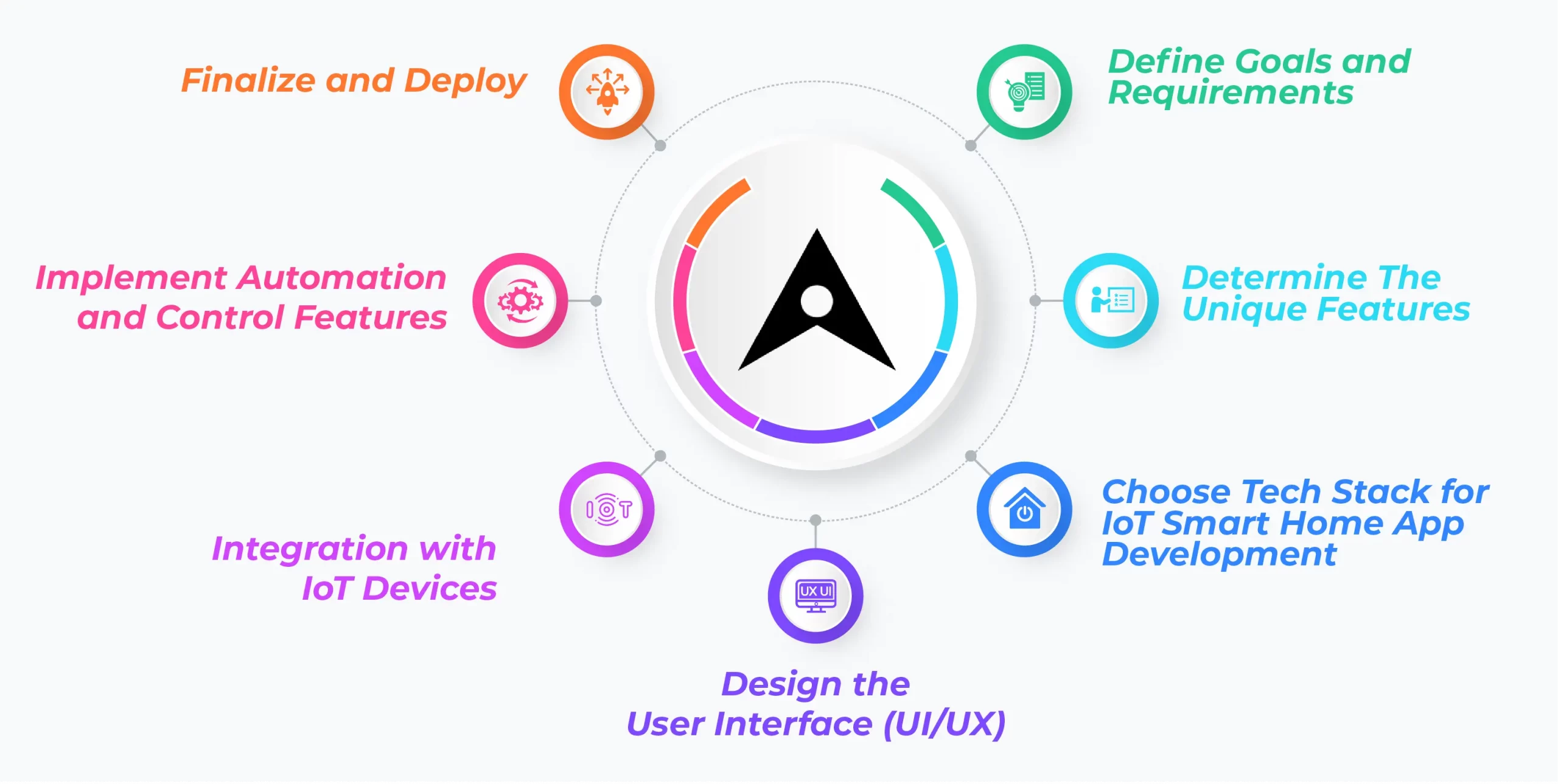
1. Define Goals and Requirements
At first, you need to clearly define the goals of your smart home app and identify the requirements. Try to understand the target audience, device compatibility, and key features that you want to incorporate into your smart home app.
For this, you should conduct market research to understand the existing competition, user preferences, and emerging trends in the smart home industry. Identify potential opportunities to differentiate your app from already-performing smart home automation apps.
2. Determine The Unique Features
IoT smart home is a trending and emerging concept in the industry. There are many smart home apps in the market which are already performing well. So when you are to develop a smart home app you have to define how your app would stand out amid this competition.
What features will your app offer to the target user group and how it attract their attention?
Therefore, to make your app differentiate in the market, you have to choose innovative or popular features that uniquely empower users.
3. Choose Tech Stack for IoT Smart Home App Development
This is one of the most important parts of the IoT app development process. Building smart home apps requires the integration of several different technologies and features. Therefore, you have to define the tech stack that you need according to your project requirements or business goals. You might have to hire mobile app developers dedicatedly if your project has specific needs.
So, select the appropriate technologies and frameworks for your IoT smart app development project based on the chosen platform (iOS, Android, or cross-platform). You can consider the following programming languages, databases, and development tools for building smart home apps:
4. Design the User Interface (UI/UX)
A smart home app may be used for either single or various purposes. So, your IoT app developer or IoT application development company will have to create the UI/UX design accordingly. Make sure the user interface of your home automation app is user-friendly and offers a seamless navigation experience.
Focus on simplicity, easy navigation, and visual appeal. Pay attention to responsive design for various screen sizes. To ensure the quality, first, create wireframes and check how they fit the requirements.
5. Integration with IoT Devices
It is also one of the crucial steps of IoT smart home app development. To enable your app with remote control, your smart home app development team will have to integrate the app with various automation home IoT devices and protocols. They must ensure compatibility with popular smart home platforms (e.g., Zigbee, Z-Wave, Wi-Fi) and establish seamless communication between the app and connected devices.
6. Implement Automation and Control Features
Develop features for setting up automation routines, scenes, and rules. Allow users to control individual devices and create customized automation sequences based on their preferences. Don’t forget to prioritize security by implementing encryption, secure authentication, and authorization mechanisms.
7. Finalize and Deploy
Once testing and iterations are complete, prepare the app for deployment. Submit the app to the respective app stores (Google Play Store, Apple App Store) or deploy it through other distribution channels. Before publishing, ensure your app is free from all kinds of bugs and technical flaws.
After launching the app, keep monitoring its performance and make appropriate changes as per user feedback. For this, you can also seek a dedicated mobile apps development service to update your app’s evolving market needs.
Read Also: 5 Major IoT Security Challenges: Learn How to Tackle Them Effectively
Cost to Build a Smart Home Automation App
On average, the cost to build a smart home automation app can range between $20,000-$40,000 for a small-scale application. However, the exact value may differ depending on your specific project requirements and features. To get an accurate estimation of the cost of IoT smart home app development, you should consult a dedicated IoT app development company.
| Type of IoT Smart Home App | Estimated Development Cost |
| Basic Device Control App | $20,000 – $50,000 |
| Automation and Scenes App | $30,000 – $70,000 |
| Security and Surveillance App | $40,000 – $80,000 |
| Energy Management App | $25,000 – $60,000 |
| Custom Smart Home App | $50,000 – $150,000 |
Conclusion
The IoT smart home app is an innovative and future-proof IoT app concept. It empowers users to take advantage of advanced technologies seamlessly. Since the IoT market continues to flourish, the demand for smart home apps with unique features is likely to increase.
However, developing an IoT-based smart home app is also a complex and challenging process. It requires great expertise and a well-defined process. Therefore, you should seek dedicated assistance from an experienced company that provides professional IoT application development services. And RipenApps is one such reliable destination where you can build your any IoT app concept including Smart Home App.


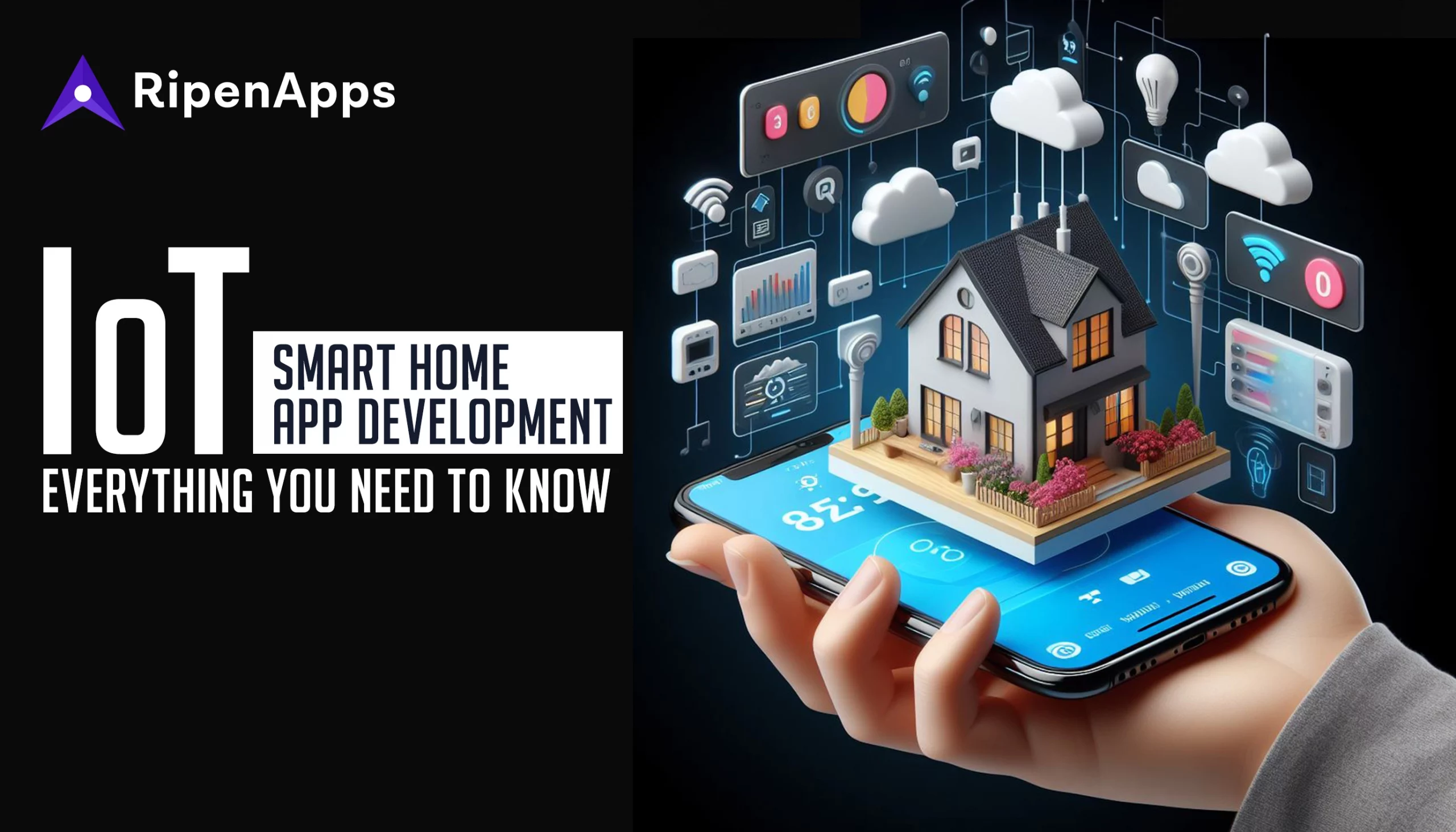





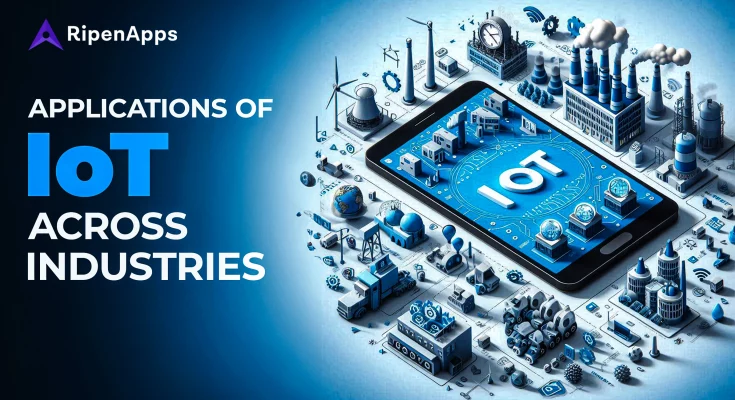
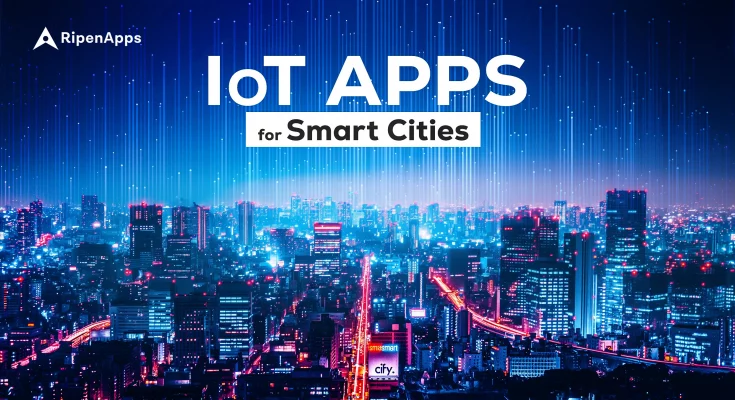


 India
India USA
USA Australia
Australia Canada
Canada UK
UK UAE
UAE
